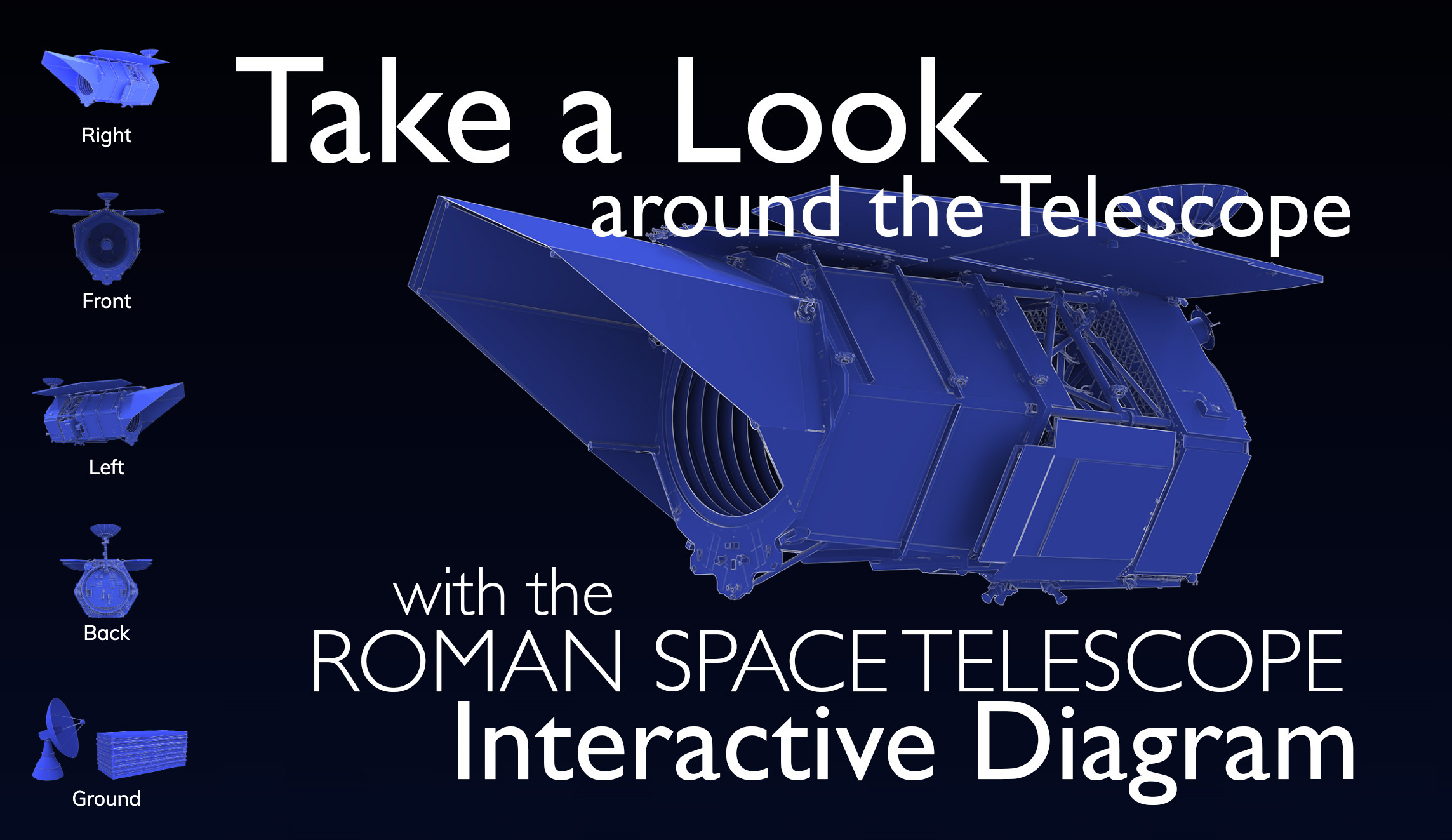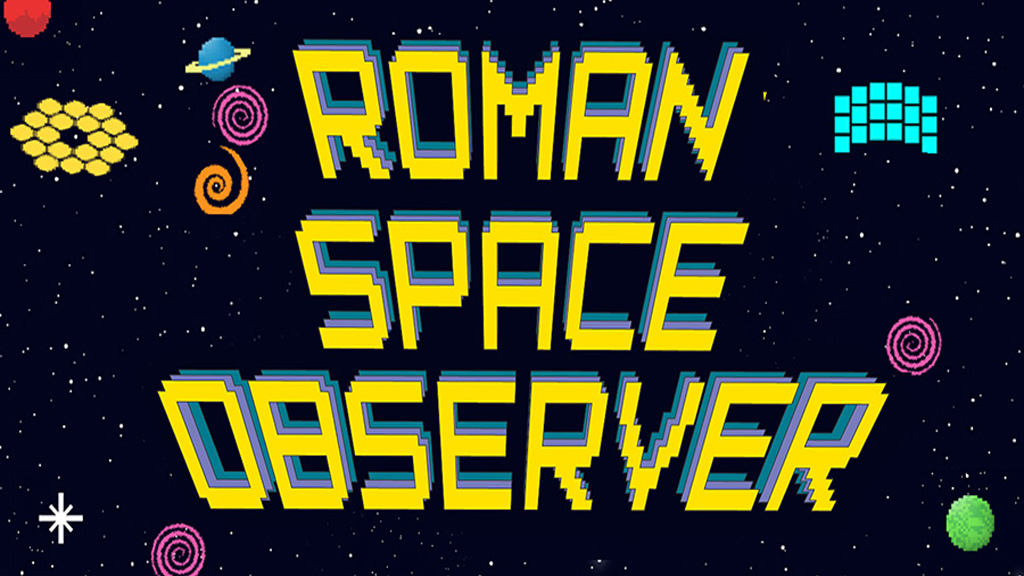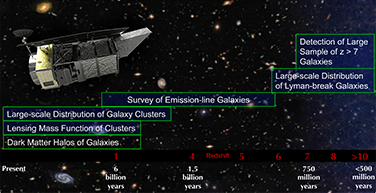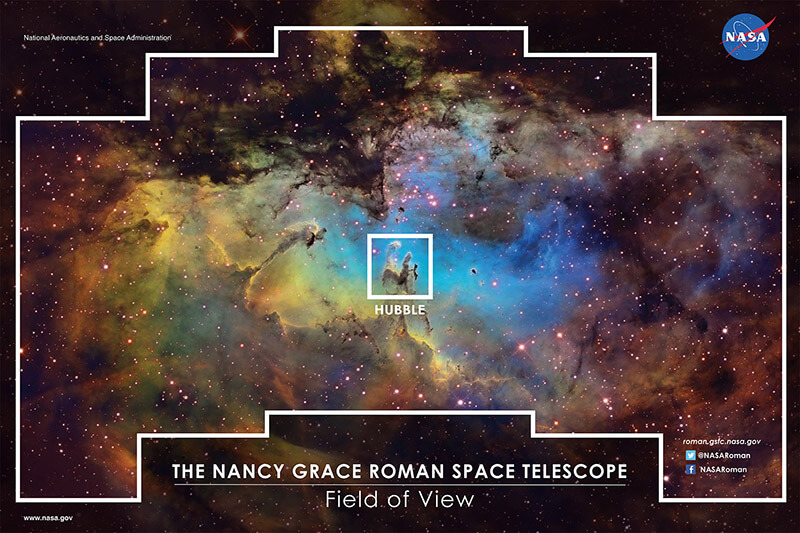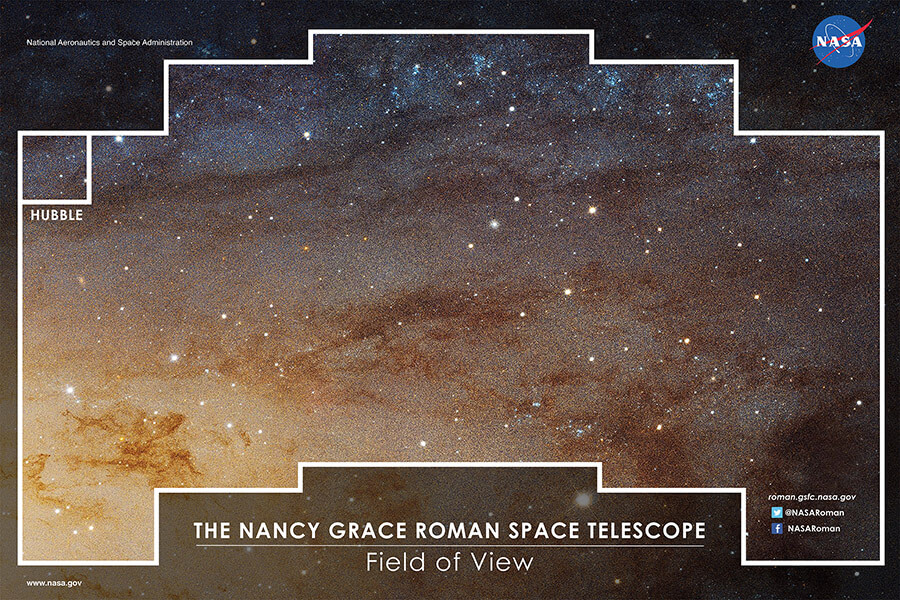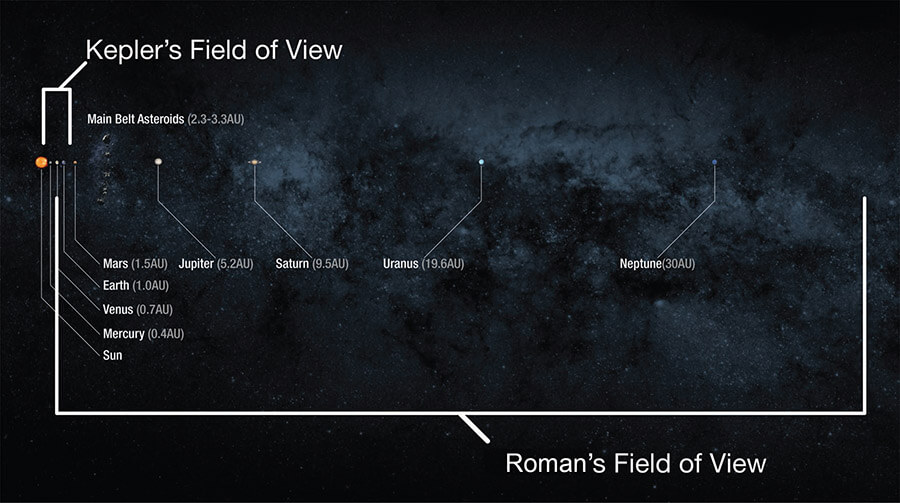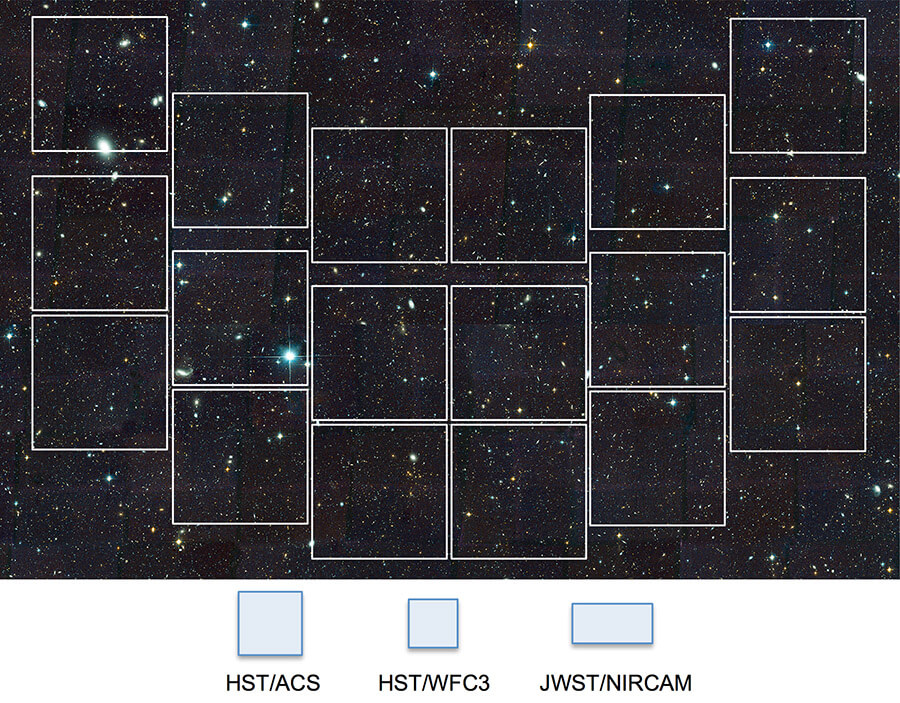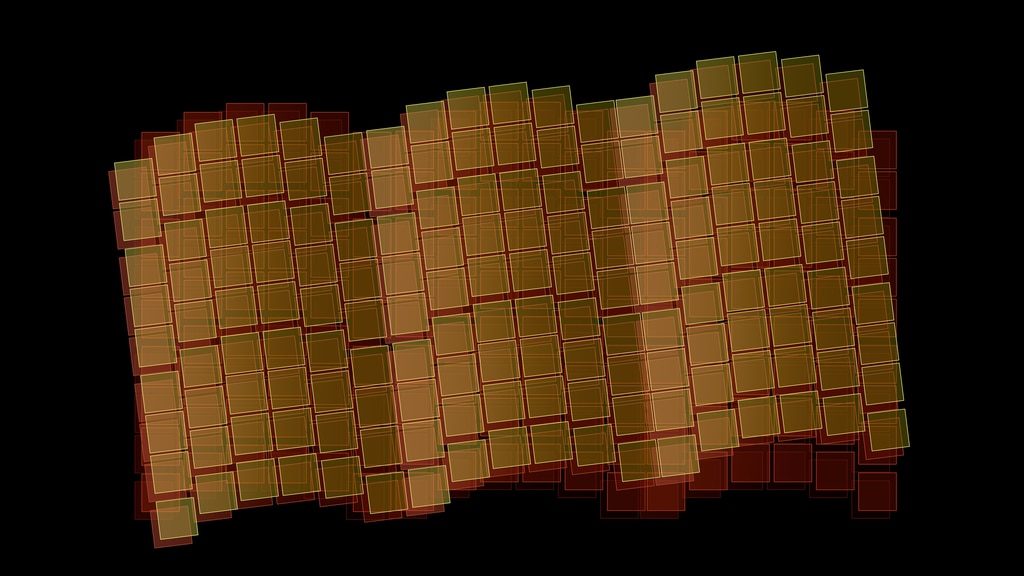
Simulated Galaxy Redshift Cube Sequence
JPG 122 KB |
video The Nancy Grace Roman Space Telescope's Wide Field Instrument will use a special tiling pattern to perform its high latitude spectroscopic survey. Roman starts with a single image 'footprint' produced by its 18-detector array and then takes a second image slightly offset to cover the small gaps between the individual detectors. It repeats this process eight more times to create a mosaic covering about 2.5 square degrees of sky.
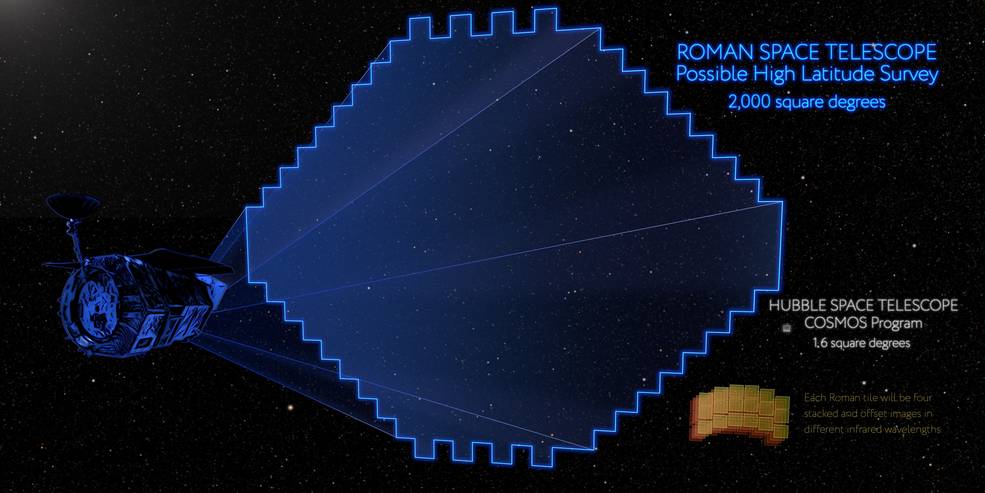
Possible High Latitude Survey
JPG 4 MB This illustration compares the relative sizes of the areas of sky covered by two surveys: Roman’s High Latitude Wide Area Survey, outlined in blue, and the largest mosaic led by Hubble, the Cosmological Evolution Survey (COSMOS), shown in red. In current plans, the Roman survey will be more than 1,000 times broader than Hubble’s. Roman will also explore more distant realms of space than most other telescopes have probed in previous efforts to study why the expansion of the universe is speeding up.
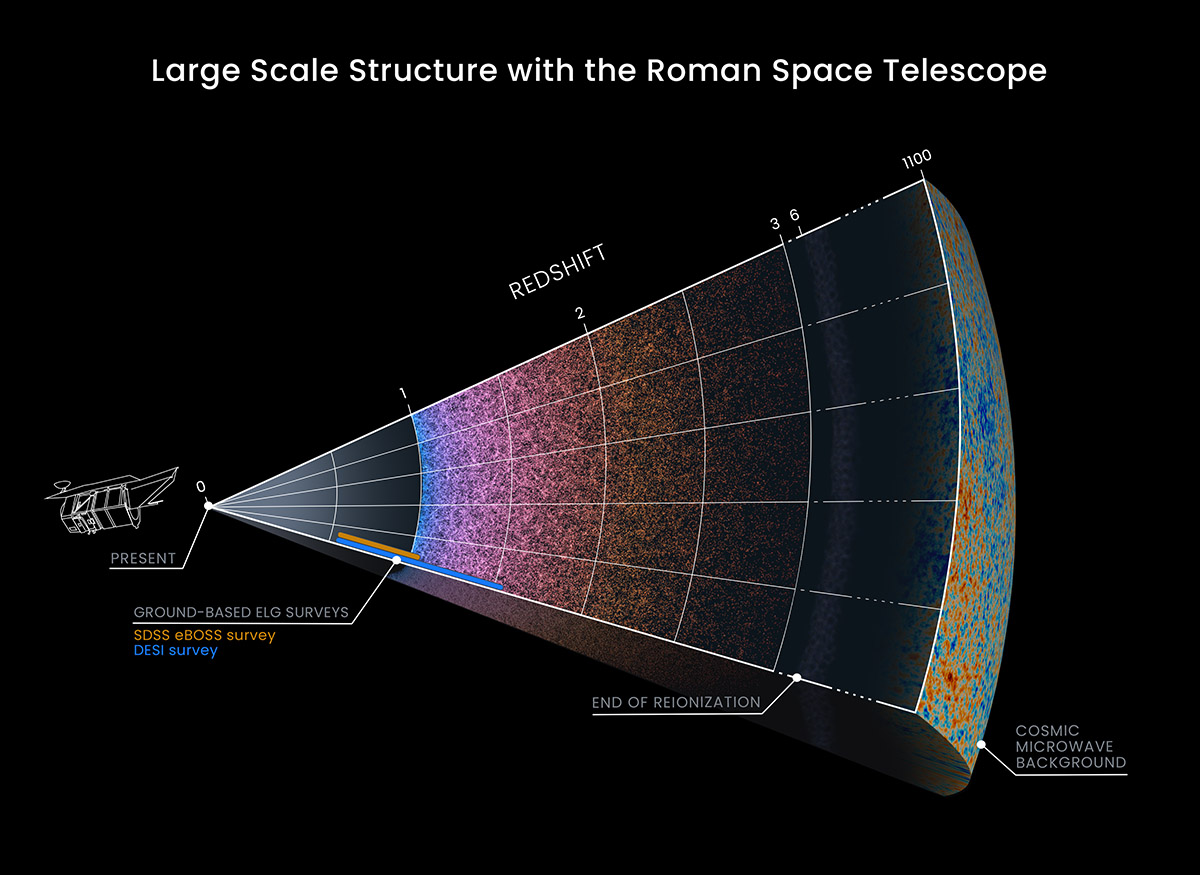
Measuring redshifts of tens of millions of galaxies
PNG 1.5 MB |
PNG 11 MB The spectroscopic component of the High Latitude Wide Area Survey measures redshifts of tens of millions of galaxies via grism spectroscopy using the WFI over at least a 1700 deg2 region that overlaps the region.
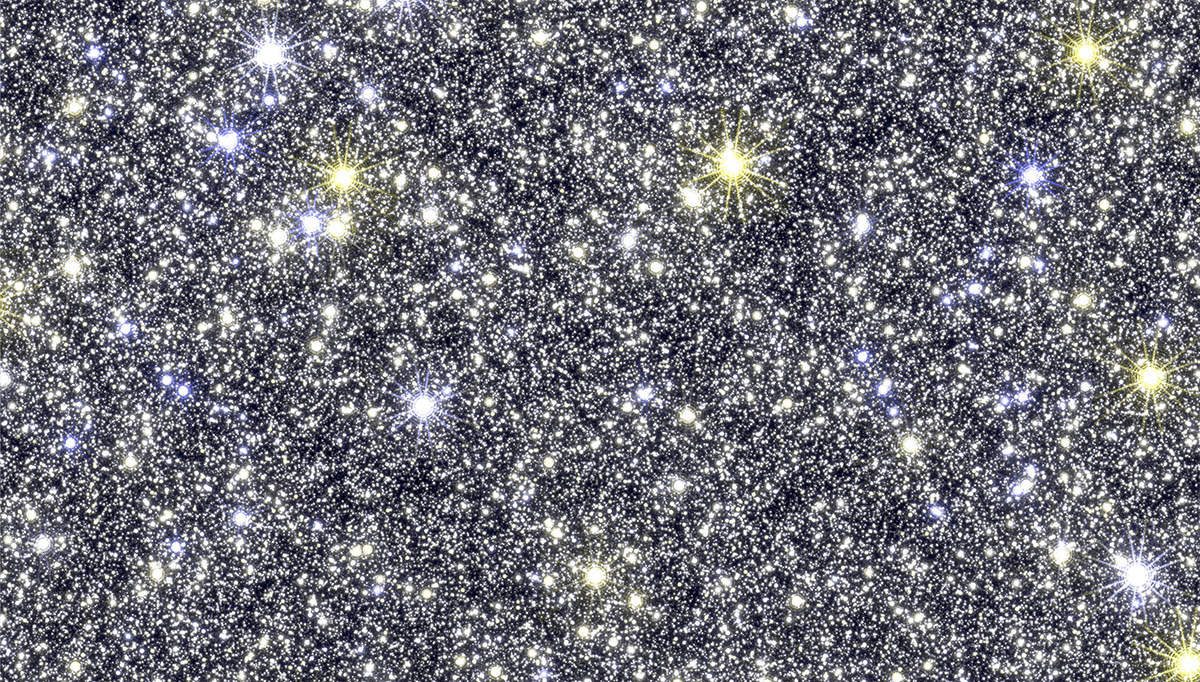
Roman Simulated Image
JPG 2.1 MB |
PNG 5.7 MB This Roman Simulated Image (1/140th Roman field of view) of center of our Galaxy
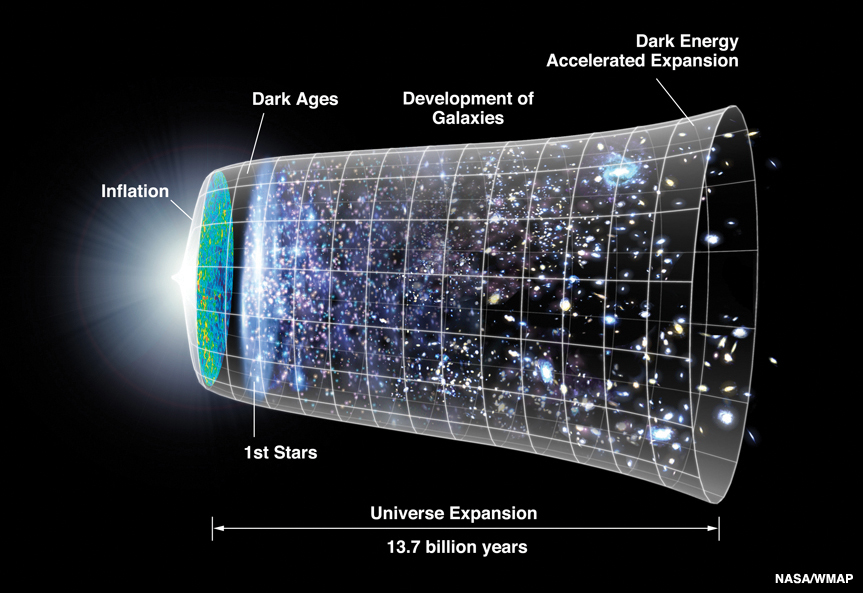
The accelerating, expanding Universe.
JPG 331 KBCredit: NASA/WMAP
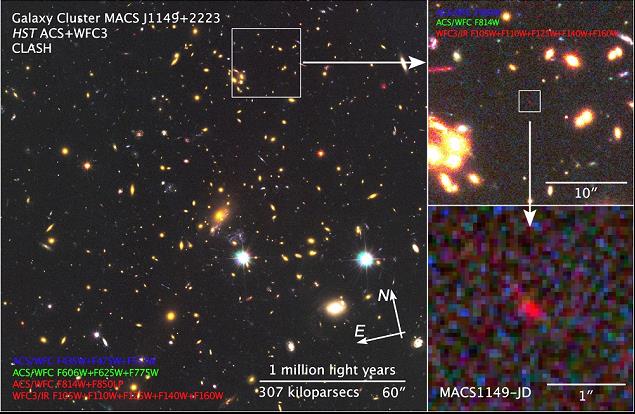
A candidate for a galaxy
JPG 57 KB A candidate for a galaxy at z≈9.6, magnified by a factor of ~15 by the foreground cluster MACSJ1149+2223 (z ≈ 0.54). The object was found in an HST survey using the WFC3IR camera (Zheng et al. 2012). This young object is seen when the universe is only about 500 million years old.
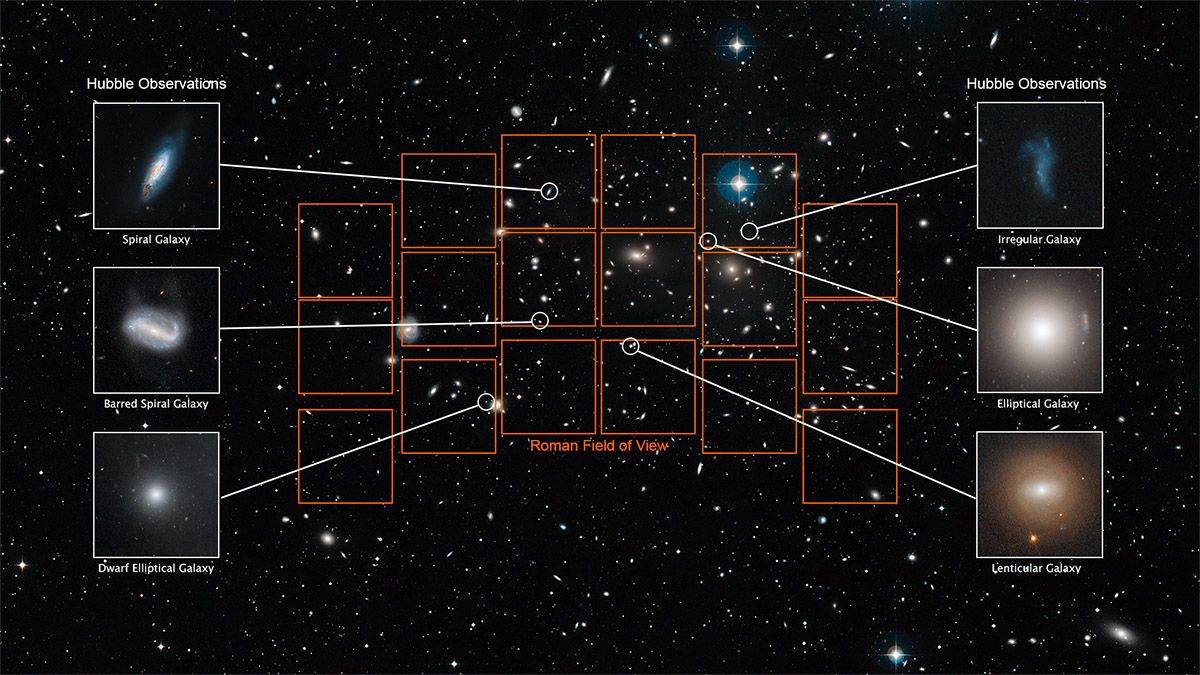
Roman’s wide field for studying galaxy clusters
PNG 4 MB
This figure illustrates the power of Roman’s wide field for studying galaxy clusters. In 2000 square degrees, the High Latitude Wide Area Survey will observe some 200 Abell clusters and a much larger number of more distant galaxy clusters. (Note: Purple circle represents estimated halo size of Rubin’s galaxy)
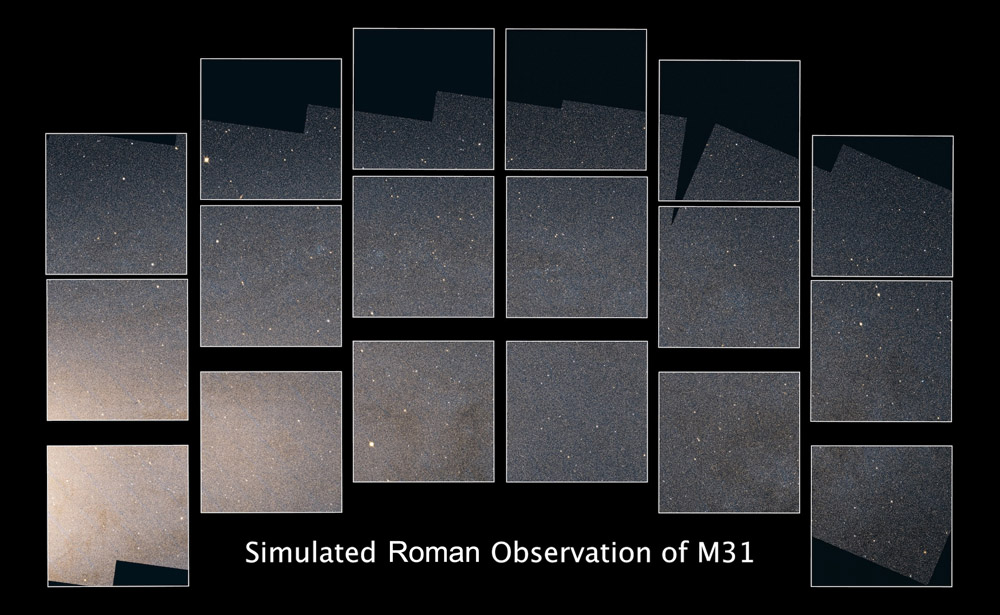
Our neighboring galaxy Andromeda (M31)
JPG 166 KB |
JPG 1.9 MB |
video
The simulated image covers a swath roughly 34,000 light-years across, showcasing the red and infrared light of more than 50 million individual stars detectable with Roman.
Credit: GSFC/SVS
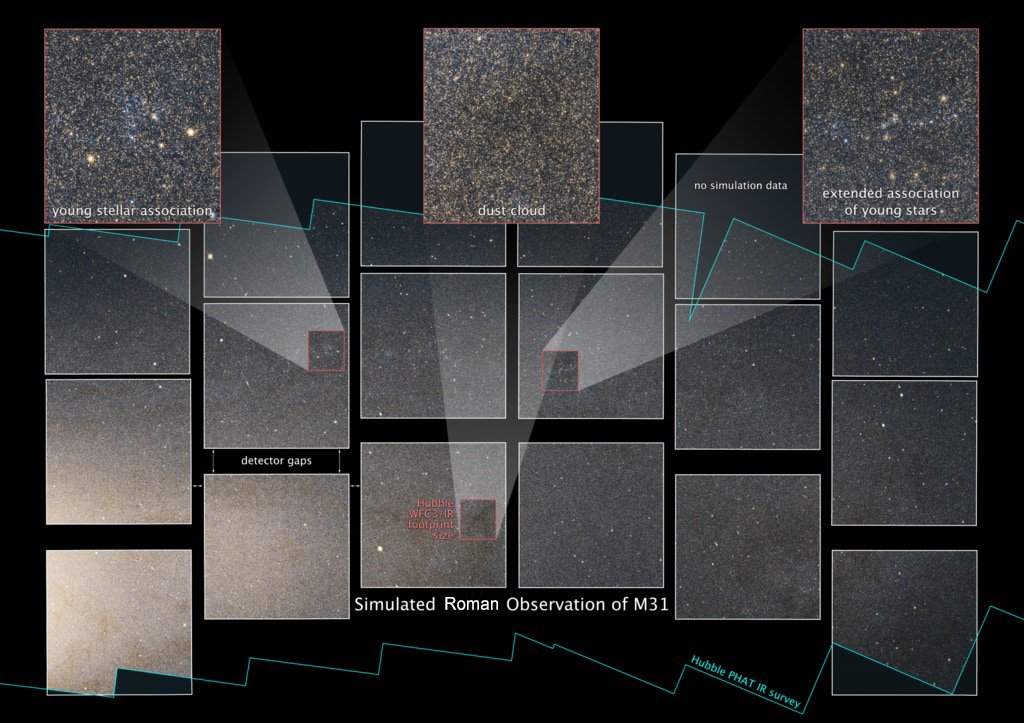
Our neighboring galaxy Andromeda (M31)
JPG 376 KB |
video This simulated image showcases the red and infrared light of more than 50 million stars in Andromeda, as they would appear with the Roman Space Telescope.
Credit: GSFC/SVS
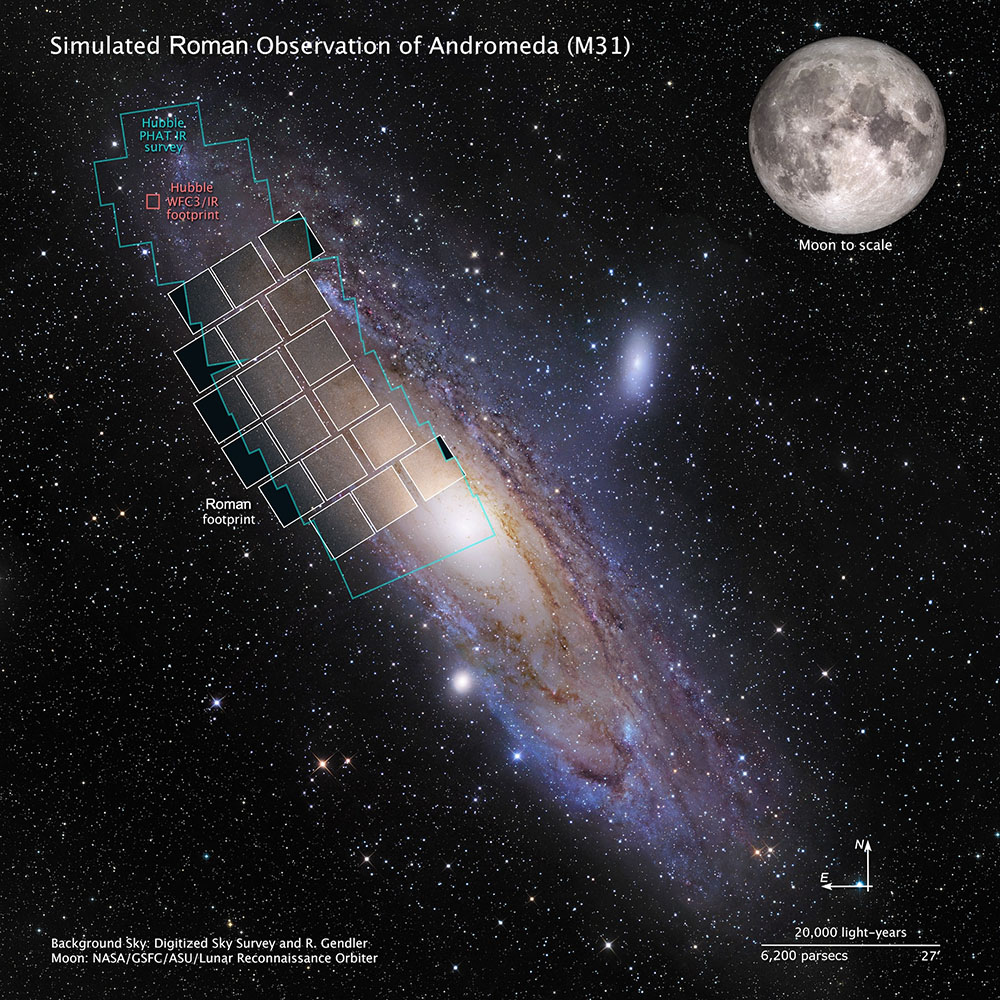
Roman simulation of Andromeda
JPG 366 KB |
JPG 3.1 MB |
JPG 14.4 MB |
video A composite figure shows the region of Andromeda covered by the Roman Space Telescope simulation. It would be able to image the main body of Andromeda in just a few pointings, surveying the galaxy nearly 1500 times faster than Hubble.
Credit: GSFC/SVS




